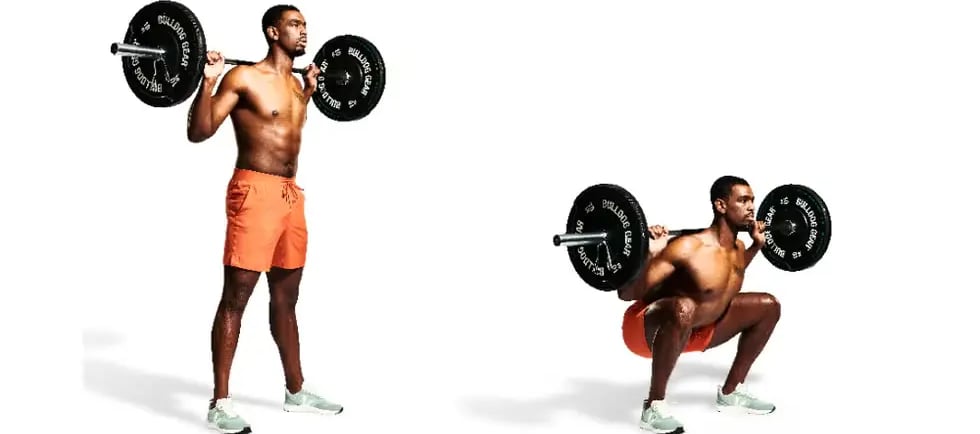Mastering Squat Workouts: The Front Squat and Back Squat Explained
GYM WORKOUT MODULES
9/22/20252 min read


Introduction to Squat Workouts
Squat workouts are a fundamental aspect of strength training, crucial for anyone looking to enhance their lower body strength and overall fitness levels. The squat is an effective compound movement that works multiple muscle groups at once, making it a staple in various workout routines. Within the realm of squat workouts, two key variations stand out: the front squat and the back squat. Understanding these two exercises will help you leverage the benefits of squatting effectively.
The Front Squat: Technique and Benefits
The front squat is characterized by positioning the barbell in front of the shoulders, resting on the clavicle and deltoids. This variation demands greater core engagement and flexibility, targeting the quadriceps more intensely than the back squat. To execute the front squat correctly, follow these steps: first, grasp the bar with a grip that is slightly wider than shoulder-width. Ensure that your elbows are pulled high to maintain a stable position. As you descend into the squat, keep your chest up and weight distributed through your heels.
Incorporating front squats into your workout not only promotes strength but also boosts athletic performance. It enhances your ability to engage in various sports, as an increased quadriceps strength translates well into explosive movements such as jumping and sprinting.
The Back Squat: A Foundation for Strength
The back squat, one of the most common squat variations, involves placing the barbell across the upper back and shoulders. This exercise allows lifters to use heavier weights compared to the front squat due to the different mechanics involved. It primarily targets the posterior chain, including the hamstrings and glutes, while also promoting overall body stability.
When performing the back squat, it is crucial to maintain a neutral spine to prevent injury. Begin by positioning the bar safely on your upper back and take a step back to ensure adequate space. Squat down by bending at the hips and knees, focusing on keeping your chest lifted and your knees aligned with your toes. As you rise back to the starting position, engage your glutes to complete the movement.
Back squats are not only vital for building strength but also play a significant role in improving functional fitness. They translate into better performance in daily activities, enhancing your ability to perform movements like lifting or carrying heavy objects.
Incorporating Squats into Your Routine
When integrating front and back squats into your workout regimen, it is essential to focus on proper form and technique to maximize benefits while minimizing the risk of injury. Start with lighter weights and gradually increase the load as your strength and confidence grow. Aim to include both variations in your workouts to ensure balanced development of your lower body.
Additionally, complement your squat workouts with dynamic stretching and mobility exercises to improve flexibility. This will not only enhance your performance but also contribute to overall joint health.
In conclusion, both front and back squats are indispensable elements of an effective squat workout. Prioritizing technique, consistency, and progressive overload will yield significant strength gains and enhance your fitness journey.
